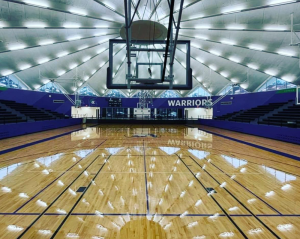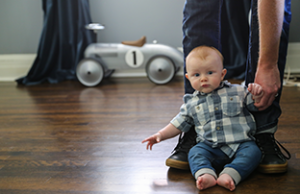
Hardwood in Sports
Hardwood plays a bigger role in sports than one would think. It is a versatile material commonly used for sporting equipment and playing surfaces because it’s strong, durable, easy to repair, and can last a long time. Let’s explore which sports use hardwood in their daily practices for playing or training.
What’s the Best Wood for Sports Equipment?
Maple and Ash hardwood are top choices of natural materials for making many types of sporting equipment. These hardwoods are flexible, durable, and have been used to make sports equipment for hundreds of years. Maple has a dense grain structure, providing strength and durability. Ash is lighter, flexible hardwood that balances strength and ease of use.
What Sports Use Wooden Equipment?
Many sports, such as baseball, cricket, hockey, table tennis, golf, field hockey, bowling, billiards, and lacrosse, use wooden equipment in their training and daily practices.
On Aaron Judge’s 62nd home run, he broke an MLB record. One of the most exciting aspects of this feat was the bat he swung. Learn about the hardwoods to make a bat that set several MLB records: https://www.gutchess.com/a-history-of-the-hardwood-bat…/
Is Real Wood still Used in Sporting Equipment Today?
Wood has traditionally been used to make sports equipment and playing surfaces. While some sports have altered their equipment to synthetic materials, wood remains well-established or even the material of choice in many others. In the 2024 Summer Olympics, wooden equipment can still be seen in daily sports practices and training like rowing, canoe slalom, canoe sprint, hockey, handball, archery, sailing, and table tennis. These sports still rely on the unique properties of wood to enhance performance and maintain traditional aesthetics.
What Wood is Used for Athletic Flooring?
Maple is almost always used in gyms and sports floors, like basketball courts. According to the Maple Flooring Manufacturers Association (MFMA), maple is so popular in the sports flooring industry that MFMA defines the standards for sports floor installation and maintenance. Maple has a Janka hardness rating of around 1450, and it is highly shock-resistant, attractive, and available.

What Sports are Played on Hardwood Floors?
Hardwood has been the traditional flooring material for basketball, volleyball, indoor field hockey, gymnastics, squash and futsal. The smooth surface of hardwood floors ensures consistent ball bounce and player movement, important for competitive games.
The Accor Arena will host the basketball, artistic gymnastics and trampoline events during the Olympics and the wheelchair basketball during the Paralympics during the 2024 Paris Olympics.

Key Performance Features of Hardwood Sports Floors
Hardwood sports floors absorb shock and provide durability and traction. These features reduce the risk of injury for athletes and improve their performance by providing a stable, durable surface. The natural beauty of hardwood also adds to the aesthetic appeal of sports facilities and arenas, making it a popular choice for professional and recreational athletic spaces.
Where does the Wood Come from that is used in Sports?
The hardwood used for sports equipment and flooring comes from hardwood forests, like the forests we responsibly manage at Gutchess Lumber. Our commitment to supplying premium hardwood means that athletes can rely on our materials in their equipment and arenas to enhance and support their performance, training, and careers.
As the 2024 Summer Olympics kick off, look out for hardwood products in equipment and sport flooring during each event. You will be surprised by how much hardwood you will find. Gutchess Lumber supports the sports industry by providing premium hardwood for equipment and flooring.



